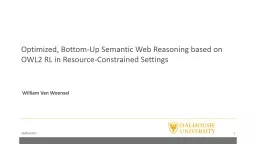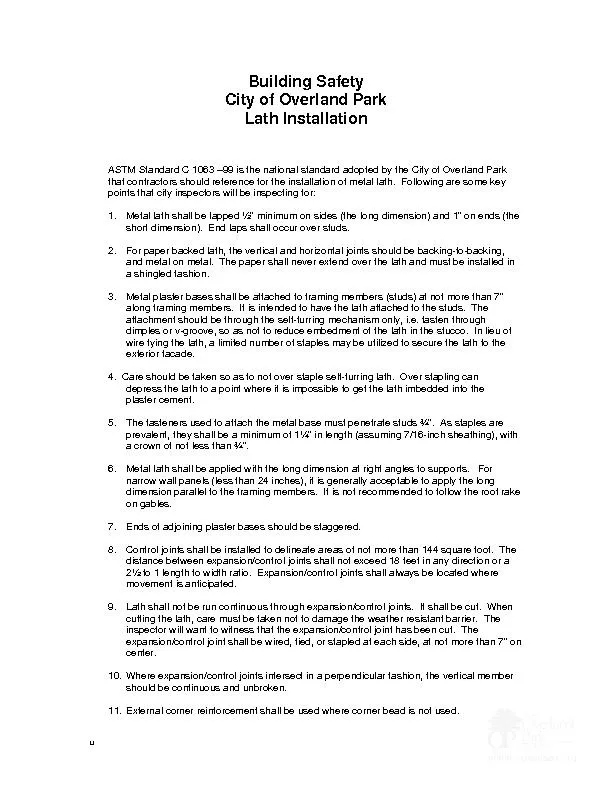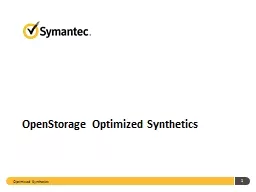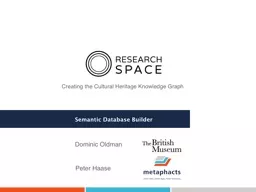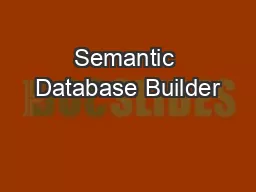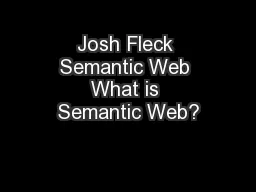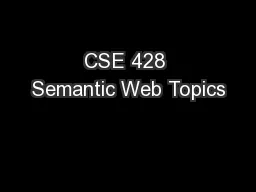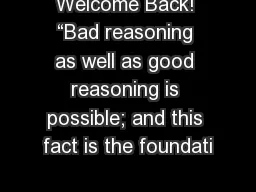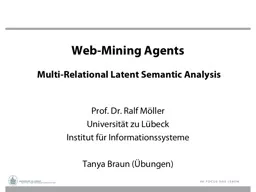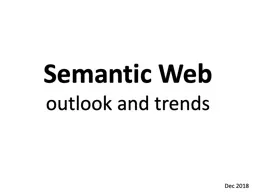PPT-Optimized, Bottom-Up Semantic Web Reasoning based on OWL2 RL in Resource-Constrained Settings
Author : sequest | Published Date : 2020-06-29
William Van Woensel 26052017 1 Context Clinical Practice Guidelines CPG Diseasespecific evidencebased recommendations Standard for decision making on diagnosis prognosis
Presentation Embed Code
Download Presentation
Download Presentation The PPT/PDF document "Optimized, Bottom-Up Semantic Web Reason..." is the property of its rightful owner. Permission is granted to download and print the materials on this website for personal, non-commercial use only, and to display it on your personal computer provided you do not modify the materials and that you retain all copyright notices contained in the materials. By downloading content from our website, you accept the terms of this agreement.
Optimized, Bottom-Up Semantic Web Reasoning based on OWL2 RL in Resource-Constrained Settings: Transcript
William Van Woensel 26052017 1 Context Clinical Practice Guidelines CPG Diseasespecific evidencebased recommendations Standard for decision making on diagnosis prognosis and treatment Contextsensitive care recommendations. Module 1 - . Part . 1. The . Semantic Web and Linked Data . Concepts: . A . basic overview . . 1-. 1. Library of . Congress. BIBFRAME Pilot Training . for Catalogers. Overview. Context . Goals . of the . C:\Documents and Settings\sjwaters\Local Settings\Temporary Internet Files\OLK3F\Lath Inspection Handout updated 5- Building Safety City of Overland Park Foundation Weep Screed Alternate Detail (Exam Introduction. Evaluation of Information System. A set of hardware, software, . data. , procedural, and . human. components that work together to generate, collect, store, retrieve, process, analyze, and/or distribute . 1. OpenStorage. Optimized Synthetics. Agenda . Optimized Synthetics. 2. What is Synthetic Backup?. 1. What is an Optimized Synthetic Backup?. 2. How to use Optimized Synthetic Backup?. 3. What is a Synthetic Backup?. Dominic Oldman. Peter . Haase. Creating the Cultural Heritage Knowledge Graph. ResearchSpace. Project. Goals and context. ResearchSpace. Platform. m. etaphacts. Knowledge Graph Platform. Brief demo. Dominic Oldman. Peter . Haase. Creating the Cultural Heritage Knowledge Graph. ResearchSpace. Project. Goals and context. ResearchSpace. Platform. m. etaphacts. Knowledge Graph Platform. Brief demo. Movement led by W3C that promotes common formats for data on the web. Describes things in a way that computer applications can understand it. Describes the relationship between things and properties of things. AND. TRANSITION PLANNING. What we know so far…. 1. WE WILL FOCUS TODAY’S PRESENTATION ON:. A very brief overview of the entire rule. Key provisions relating to the Home and Community-Based (HCB) . Introduction. Jeff Heflin. Lehigh University. The Semantic Web. “Semantic” “Web”. Semantic: "of or relating to meaning in language" (Def. Webster’s). Web: The World Wide Web. Official Definition. - Charles Sanders Peirce. On the Radar. Researching the Persuasive Speech Assignment. Due Wednesday on . WebCT. (by 11:59 p.m.). Exam Two. This Friday in Lecture. Study Guide on Course Website. Workshops for the Persuasive Speech. Prof. Dr. Ralf Möller. Universität zu Lübeck. Institut für Informationssysteme. Tanya Braun (Übungen). Acknowledgements. Slides by: Scott . Wen-tau . Yih. Describing joint work of Scott Wen-tau . PRESENTED BY . Peter Mika, Sr. Research Scientist, Yahoo Labs. . ⎪ . November 27, . 2014 . The Semantic Web (2001-). 11/27/14. 2. Part of Tim . Berners-Lee’s . original proposal . for the . Web. Dec 2018. The Past ~30 Odd Years. 1984 . Lenat’s. Cyc vision. 1989 TBL’s Web vision. 1991 DARPA Knowledge Sharing Effort. 1996 RDF. 1998 XML. 1999 RDFS. 2000 DARPA Agent Markup Language, OIL. 2001 W3C Semantic Web Activity. C. Binding, K. May. 1. , R. Souza, D. Tudhope, A. Vlachidis. Hypermedia Research Unit, University of Glamorgan. 1. English Heritage. STAR Project - Aims. In. vestigate semantic technologies for integrating and cross searching datasets and associated grey literature.
Download Document
Here is the link to download the presentation.
"Optimized, Bottom-Up Semantic Web Reasoning based on OWL2 RL in Resource-Constrained Settings"The content belongs to its owner. You may download and print it for personal use, without modification, and keep all copyright notices. By downloading, you agree to these terms.
Related Documents

